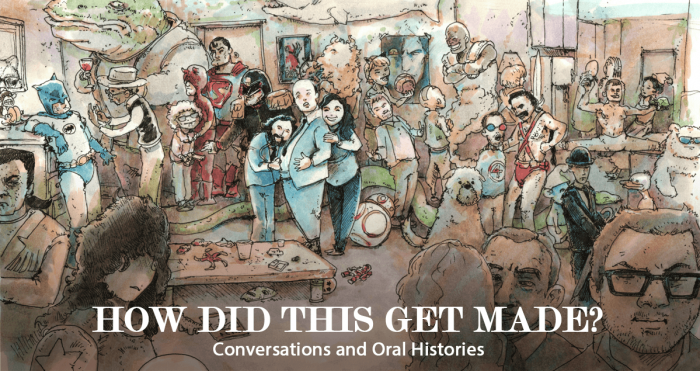HDTGM: A Conversation With Simon Wincer, Director Of THE PHANTOM
We may receive a commission on purchases made from links.
On February 17, 1936, Lee Falk's comic strip hero The Phantom was introduced to the world. Over the following years—as the character reached millions of fans through an unparalleled-for-that-era level of worldwide syndication—The Phantom became an international sensation. The comic strip (clearly) excelled in many countries around the world, but perhaps none more so than Australia. So it seems fitting that, six decades later, the man who would finally bring this hero to the big screen would be an Australian himself: Simon Wincer.
To learn about how The Phantom was made, I spoke at length with Simon Wincer. But it took a little while before we even got to talking about the masked crusader. Because, frankly, there was just too much to talk about. Like how Wincer swooped into to replace the original director of Free Willy (and ended up helping to save that film). Or how he helmed an Emmy-dominant, prestige miniseries (years before such things were du jour). We spoke about all those things and much more (like the cinematic value of manure). Below is a copy of our conversation...
Simon Wincer Interview
How Did This Get Made is a companion to the podcast How Did This Get Made with Paul Scheer, Jason Mantzoukas and June Diane Raphael which focuses on movies This regular feature is written by Blake J. Harris, who you might know as the writer of the book Console Wars, soon to be a motion picture produced by Seth Rogen and Evan Goldberg. You can listen to The Phantom edition of the HDTGM podcast here. 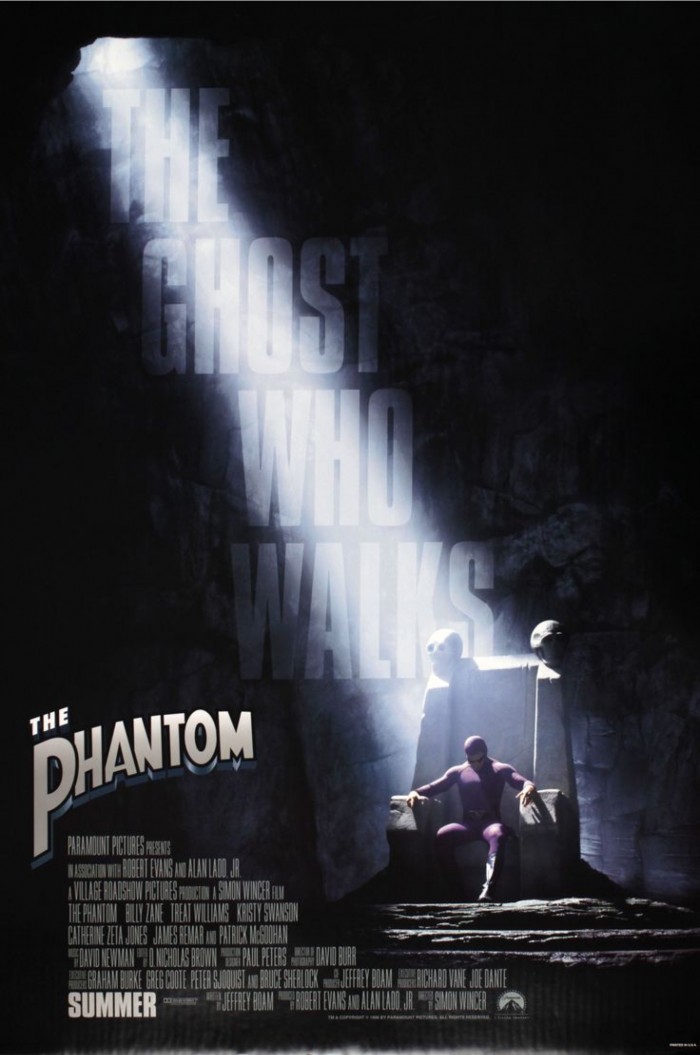 Synopsis: In 1938, a masked avenger known as "The Phantom" (who has descended from a line of African superheroes), travels to New York City to thwart a dastardly criminal genius from obtaining some magic skulls that will give him the ultimate power.Tagline: Slam Evil!
Synopsis: In 1938, a masked avenger known as "The Phantom" (who has descended from a line of African superheroes), travels to New York City to thwart a dastardly criminal genius from obtaining some magic skulls that will give him the ultimate power.Tagline: Slam Evil!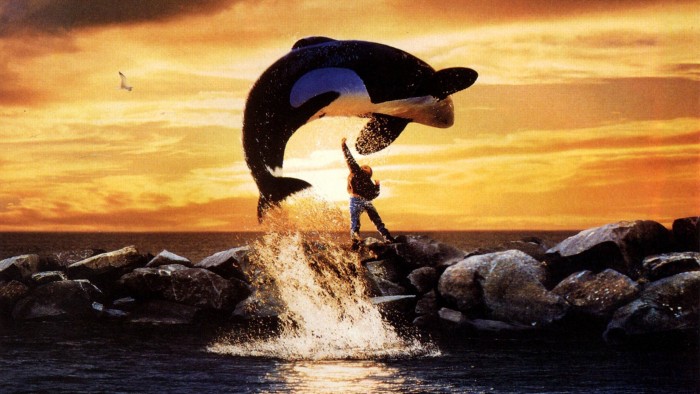
Part 1: Whales on Rocket Launchers
Blake J. Harris: Simon, you've directed so many interesting projects over the course of your career, it's almost hard to figure out where we should begin. Except, of course, that the kid in me makes that easy: Free Willy. How did that come about?Simon Wincer: Interesting story. The script was sent to me by my agent. I read it and told her I loved it. About a month later she rang back and told me they'd decided to go in a different direction. With a younger director who had won Sundance. [thinking] I can't remember his name, I'm sorry.Wincer is referring to Robin Armstrong, whose film One Cup of Coffee (later retitled Pastime) was in competition at Sundance in 1991. Simon Wincer: Anyway, a few months later I was off in Russia of all places, filming an episode of Young Indiana Jones. While I was in the production office I got this message from my agent asking me to call urgently. She said that a job had come back and she needed an immediate answer. So I got her on the phone and she said, "Warner Bros has fired the director on Free Willy and it's in pre-production." I was scheduled to go home from Russia to Australia (so I could catch up with my family) before going to Skywalker, but she said, "Can you come back to Los Angeles and meet me at Warner Bros?"Blake J. Harris: That's quite a detour.Simon Wincer: [laughing] Yes, it was. But that's what I did. And I'm in a room with these producers, it's 8 o'clock at night and I've just flown in from Moscow. We talked about Free Willy and then they showed me—this is 4 weeks before they were scheduled to start shooting—and they showed me about 12 audition tapes of young boys. Kids auditioning for the lead part and they asked which actor I was drawn to. I said, "Jason James Richter." They said, "Well, would you cast him?" I said, "Yeah, subject to meeting with him first." By this point, it was like 10 o'clock at night, so they say okay and have him come into the studio the following morning. Lovely little kid, very bright and all that. We walked around the lot and I just chatted to him. He was so perfect. So I went back and said, "Yes, I'll cast him." Then they worked out a deal with my agent and said, "Great, you've got four weeks."Blake J. Harris: Obviously not a lot of time. How do you even get started?Simon Wincer: What had happened was the younger director had written the script out of existence. The reason they fired him, he was one of those guys who—everybody liked him—but he couldn't seem to make up his mind. They called him "Seymour" because he always wanted to see more things.Blake J. Harris: Ha!Simon Wincer: So I got back with the writers and we sort of managed to, you know, pull the thing into shape. And then I flew down to Mexico where they had this whale in a tank, Keiko, and they were building the set at this theme park (which was closed at the time). Then we flew up to the Pacific Northwest; did a week in scouting, found the major locations and then I had to go home to Australia because I hadn't seen my kids for a long time. So I took off for about five days, then came back and we cast the rest of the film.Blake J. Harris: So you guys shot in Mexico and the Pacific Northwest?Simon Wincer: Yeah, the first six weeks we shot in Mexico and then we went up to the Pacific Northwest. Nobody paid much attention to it because it was a little, reasonably cheap movie. And Dick Donner [the executive producer] was off finishing Lethal Weapon 4 (I think) at the time.Blake J. Harris: What was the hardest part of filming the movie?Simon Wincer: Well, the one thing we knew we needed to deliver was the moment where the whale escapes to freedom and leaps over the seawall. We didn't know how the hell we were going to do that. And we had meeting after bloody meeting after bloody meeting. Because, you know, CGI in those days was pretty primitive. That was the year of Jurassic Park and the first time people had really seen what the potential could be. Eventually we worked out how we could do the thing. And we were able to, you know, pull that moment off.Blake J. Harris: So how did you do it? Do you remember?Simon Wincer: Yeah, well we were up in a little harbor. In a place called Arcadia.Blake J. Harris: Yeah, yeah, I know Arcadia.Simon Wincer: At high tide, we basically built a rocket-launcher and we put a full size whale on this rocket launcher (which was sunk into this harbor) and we fired the bloody thing. It went up this track and fired out of the water until it was about 6 feet out of the water and then it came to a stop. And then the shot continued, basically, as CGI. And then we had our full-size animatronic whale, which was just brilliant. A guy called Walter Conte built it. That was on a big crane, so we swung that over the boy's head and then CGI it as it goes into the water.Blake J. Harris: Wow.Simon Wincer: So the combination of that, and then a stunning score by my dearly departed wonderful friend Basil Poledouris. The score was just fantastic...Blake J. Harris: Did you have a sense that this film was going to be as big of a hit as it turned out to be?Simon Wincer: Not at first. But after we finished a cut of the film and all the way through my editor, Nick Brown, kept saying, "You've got something special here, you know?" The story had so much heart and it was all coming together really well. And little Jason was wonderful. And Michael Madsen. Everything seemed to click. Then we had two previews of the film. The first preview was on a Saturday morning in Woodland Hills, I think it was. The film went through the bloody roof, you know? We were just overwhelmed by the reaction. The score came in at 96, which was one of the highest that Warner ever tested. Well, we had another screening two weeks later and everyone from Warner Bros was at that preview; puffing their chest out and claiming credit for their role in the movie.Blake J. Harris: [laughing]Simon Wincer: So the budget for the music went up and we could afford a song from Michael Jackson. It was just unbelievable. And one thing that was great about the film was we changed the way the world thought about whales in captivity and all of that. So it's just a great family film with a lot of heart and great messages about family. Very proud of that film. And people still talk about it today.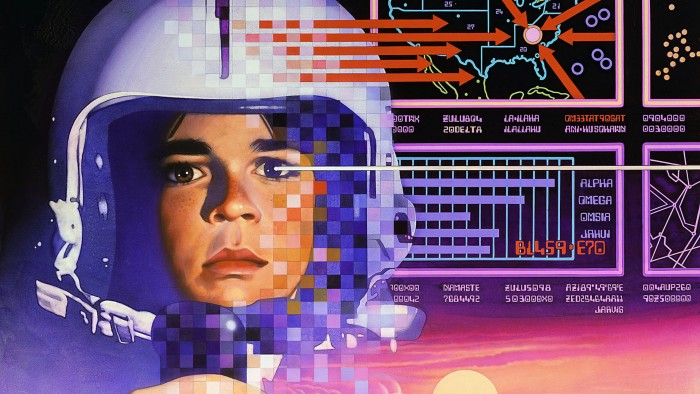
Part 2: When Television Was Young
Blake J. Harris: Had you always known that you wanted to direct films?Simon Wincer: Initially, I wanted to be a television director. That's how it started. I visited a TV studio with my Dad. I just literally came along because he had some business there. And they were doing a live show. I saw the lights on in the studio, and the cameras, and this world whiz up before my eyes. And then I got another opportunity to sit up in the control room for a Tonight-like show, which was live every night. And as soon as I saw what the director did, I thought: that's what I want to do.Blake J. Harris: Awesome.Simon Wincer: So I left school and started my career at the ABC, which is kind of like the BBC in England, I suppose. Started in Sydney and kind of worked my way up. And because Television was young, it wasn't too hard to work my way up fast. Within like two years I was directing tiny live shows and smaller outside broadcasts. Stuff like that. Then the more I became interested in drama, first with television drama, the more I wanted to directed drama films.Blake J. Harris: What was the hardest part of breaking into television?Simon Wincer: Well...it wasn't that hard. I mean, it was just growing so fast. It was the early days of Australian TV and I had a good education. I was pretty bright and prepared to work very hard. Double shifts and do all that stuff and I guess people pick up on that. After I spent about 5 years at the ABC, I wanted to direct drama. They said, "You must learn the theatre, dear boy!" So I actually started working part-time in the theater at night time, and then I loved it so much—I was learning so much—that I worked full-time in the theater for quite a few years. As a second rate actor and stage manager and all that. And that led me eventually to England, working in the West End. Eventually, I thought it was time for me to go back to television and I got a job with a production company over there. Because of my experience, I was made what they called a stage manager; which was basically an assistant director. And the first director I was assigned to was this very young and very, very talented production designer. And his name was Ridley Scott...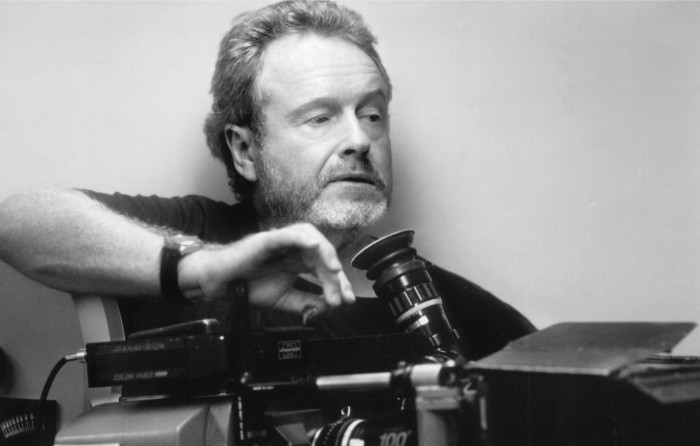 Blake J. Harris: Ridley Scott? That's great!Simon Wincer: He had just come out of the design department. This was long before his commercial career, of course. And at that time, London was the center of the world. It was the place to be. After three years of working there, I came back to Australia and started working as an assistant director then later as a director on a whole lot of cop shows in Australia. And it sort of really grew from there. Doing these TV dramas and stuff. Loving the whole process. And I always loved films, you know? Always been a fan of movies. But TV was a good way of learning one's craft; because you don't have the time or the money or the budget. It was a fantastic experience, just doing week in and week out of television drama.Blake J. Harris: As you were learning your craft, just as a creative voice, what were some of the biggest influences? What would you say really informed your style?
Blake J. Harris: Ridley Scott? That's great!Simon Wincer: He had just come out of the design department. This was long before his commercial career, of course. And at that time, London was the center of the world. It was the place to be. After three years of working there, I came back to Australia and started working as an assistant director then later as a director on a whole lot of cop shows in Australia. And it sort of really grew from there. Doing these TV dramas and stuff. Loving the whole process. And I always loved films, you know? Always been a fan of movies. But TV was a good way of learning one's craft; because you don't have the time or the money or the budget. It was a fantastic experience, just doing week in and week out of television drama.Blake J. Harris: As you were learning your craft, just as a creative voice, what were some of the biggest influences? What would you say really informed your style?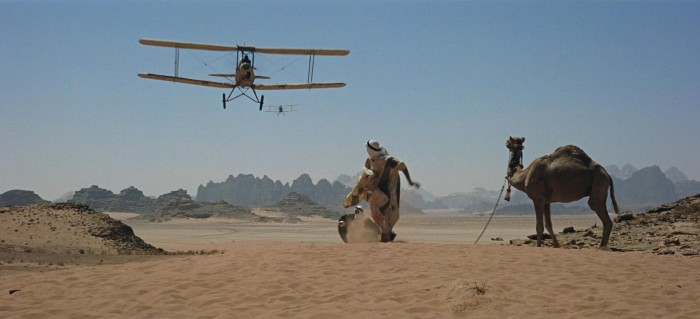 Simon Wincer: The biggest influence, certainty, was Lawrence of Arabia. I just remember seeing that movie and it blew me away. Talk about craft. David Lean, he's just so economical in how he chooses to show a moment or with a transition. Stuff like that. I was just blown away. Not only its epic nature, but wonderful content. Everything about it. That's one thing that steered me along towards making the kinds of things I love to make.Blake J. Harris: You're back in Australia now. Did you ever live in Los Angeles?Simon Wincer: Yeah, I lived there for 12 years. As a matter of fact, I'm married to an American art director. But we moved back to Australia back in 2007/2008. I had a couple of projects here. We lived in Santa Monica for quite a few years. I think I started making movies in America in 1984. I first commuted then bought a place there. And I'm back here now.Blake J. Harris: I believe the first film you shot in America was D.A.R.Y.L. How did that opportunity come about?Simon Wincer: I'd directed a movie called Phar Lap, an Australian film, and before that I'd done another film—I was the executive producer on—called The Man from Snowy River, which 20th Century Fox released. So suddenly I had American agents chasing me. And D.A.R.Y.L. came about through my first agent, a wonderful lady called Jane Sindell, and she was at ICM. I flew to New York and I started pre-production in October 1984, I think it was. I loved doing that movie because I had two sons exactly the same as the two leads in that film. And my two boys were a lot more athletic than the two boys in the film so they did a lot of doubling; swimming in the lake and riding bikes. It was a sweet little film. And got to work with some lovely people, including Marvin Hamlisch, who is no longer with us. He did the score and he was just great.Blake J. Harris: I didn't realize he'd worked on the film.Simon Wincer: He was wonderful. I remember, during post-production he would call. And my daughter, she would say, "Daddy! It's that rude man on the phone again." Because Marvin was so full on, you know? He heard this comment and he laughed. He said, "I'm not really that bad, am I?"Blake J. Harris: What was next? Did you want to keep working in Australia? More Hollywood? Did you have a particular preference?Simon Wincer: I had a young family and I was keen to stay in Australia. But straight after D.A.R.Y.L. I was offered a television thing. A little TV movie for Disney. At the time when Michael Eisner and Jeffrey Katzenberg had gone to Disney and taken the whole place over. They were involved with every aspect of the movie. And what they'd hired me to do was something called The Girl who Spelled Freedom. It was a movie reinvigorating the Wonderful World of Disney, which used to be on Sunday nights, you know? So that followed D.A.R.Y.L. and then I did a TV thing for CBS called The Last Frontier, which was half-shot in Australia and half-shot in America. It starred Linda Evans, Jason Robar and Jack Thompson. Very successful for CBS. Then I made my film here, The Light Horseman and so it goes on.
Simon Wincer: The biggest influence, certainty, was Lawrence of Arabia. I just remember seeing that movie and it blew me away. Talk about craft. David Lean, he's just so economical in how he chooses to show a moment or with a transition. Stuff like that. I was just blown away. Not only its epic nature, but wonderful content. Everything about it. That's one thing that steered me along towards making the kinds of things I love to make.Blake J. Harris: You're back in Australia now. Did you ever live in Los Angeles?Simon Wincer: Yeah, I lived there for 12 years. As a matter of fact, I'm married to an American art director. But we moved back to Australia back in 2007/2008. I had a couple of projects here. We lived in Santa Monica for quite a few years. I think I started making movies in America in 1984. I first commuted then bought a place there. And I'm back here now.Blake J. Harris: I believe the first film you shot in America was D.A.R.Y.L. How did that opportunity come about?Simon Wincer: I'd directed a movie called Phar Lap, an Australian film, and before that I'd done another film—I was the executive producer on—called The Man from Snowy River, which 20th Century Fox released. So suddenly I had American agents chasing me. And D.A.R.Y.L. came about through my first agent, a wonderful lady called Jane Sindell, and she was at ICM. I flew to New York and I started pre-production in October 1984, I think it was. I loved doing that movie because I had two sons exactly the same as the two leads in that film. And my two boys were a lot more athletic than the two boys in the film so they did a lot of doubling; swimming in the lake and riding bikes. It was a sweet little film. And got to work with some lovely people, including Marvin Hamlisch, who is no longer with us. He did the score and he was just great.Blake J. Harris: I didn't realize he'd worked on the film.Simon Wincer: He was wonderful. I remember, during post-production he would call. And my daughter, she would say, "Daddy! It's that rude man on the phone again." Because Marvin was so full on, you know? He heard this comment and he laughed. He said, "I'm not really that bad, am I?"Blake J. Harris: What was next? Did you want to keep working in Australia? More Hollywood? Did you have a particular preference?Simon Wincer: I had a young family and I was keen to stay in Australia. But straight after D.A.R.Y.L. I was offered a television thing. A little TV movie for Disney. At the time when Michael Eisner and Jeffrey Katzenberg had gone to Disney and taken the whole place over. They were involved with every aspect of the movie. And what they'd hired me to do was something called The Girl who Spelled Freedom. It was a movie reinvigorating the Wonderful World of Disney, which used to be on Sunday nights, you know? So that followed D.A.R.Y.L. and then I did a TV thing for CBS called The Last Frontier, which was half-shot in Australia and half-shot in America. It starred Linda Evans, Jason Robar and Jack Thompson. Very successful for CBS. Then I made my film here, The Light Horseman and so it goes on.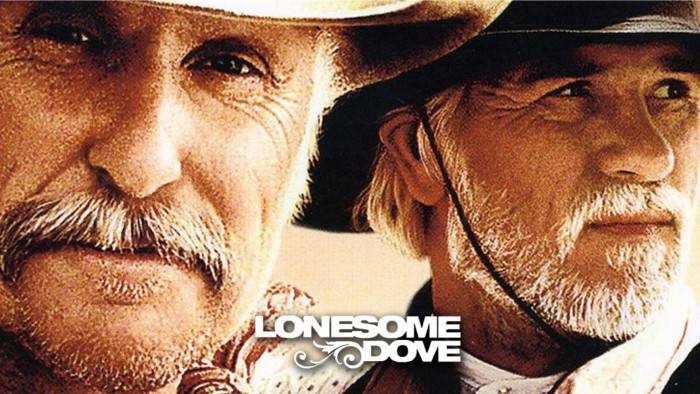
Part 3: Character, Story and Jack Russell Terriers
Blake J. Harris: Not long after that, you directed the epic miniseries Lonesome Dove. How did you get involved with that?Simon Wincer: Well, the producers were after someone to direct Lonesome Dove. They needed somebody who was both familiar with feature films—to kind of handle those high-powered actors—and someone who could also shoot on a television budget. And I think that's ultimately how I was chosen.Blake J. Harris: That's a nice combo.Simon Wincer: So they flew me to America to meet Suzanne De Passe, the executive producer, and Dyson Lovell, the producer. And they seemed to like me. So they said, "Now you need to fly to Austin, Texas and meet Bill Wittliff," who was the other executive producer. And he had done the adaptation. So I flew down with Dyson to Austin, Texas and met Bill. And Bill says, "I just want to have dinner with Simon on his own; just to get to know him better and see what his take is on this whole thing." So we went out to dinner to Bill's very nice country club in Austin Texas. I ordered a Prawn Cocktail and Bill ordered Oysters on the Shell. Eventually, our dinner was delivered. Bill cracks open the first oyster and there's a bloody, giant pearl in the middle of his oyster. And he said to me, "I think this is a sign."Blake J. Harris: Wow? Really?Simon Wincer: Yeah. That's amazing. He still has that pearl. We had a Lonesome Dove reunion at the end of March this year, which was a wonderful event. Because Lonesome Dove in Texas; it's like the bible, you know? Everybody was there, the whole cast and crew. It was an a amazing four days. It was fantastic to see everybody. Bill reminded me about the pearl then.Blake J. Harris: Did you ever have, like, the opposite of that experience? Some kind of ominous sign foreboding a bad film experience?Simon Wincer: No, not really. I've been pretty lucky. I've never really had too many creative dramas. I mean, I guess every film is fraught with—as I like to regard them— "healthy creative arguments." But I've been pretty lucky in that I've never had things taken away from me. That sort of stuff, you know? But I suppose it just goes that way if you have the attitude that it's not life and death and respect other people's opinions; particularly in creative meetings, sometimes you bite your tongue...Blake J. Harris: Not everyone is so good at that. Especially with creative projects.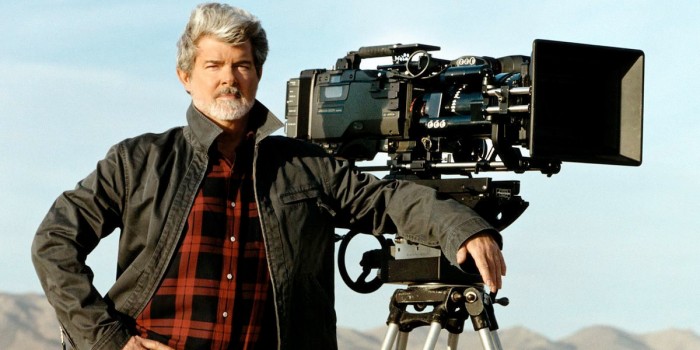 Simon Wincer: [laughing] Look, George Lucas said to me a long time ago when I was working on that television series Young Indiana Jones—just a wonderful producer and mentor—he said, "the whole thing about filmmaking, it's about compromise. It's knowing when to compromise and when to put your foot down and say I can't compromise." And that's really what it's about, you know? Yes, you can sacrifice a scene because you may be behind schedule or something. But when it comes to the key moments, he said, "just never, never ever compromise. Be like a Jack Russell, you know?"Blake J. Harris: [laughing] Well, anecdotally-speaking, compromising seems to become a more difficult proposition when the director is also the writer. You've written some things over the years, but that's never been your primary focus. So I'm curious to hear about how you approach that relationship between director and writer.Simon Wincer: In the company that I grew up with—where I did all those police dramas—the writer was God. We were taught that those lines were on a page for a reason. Somebody fought hard to get those lines on a page and it's our job to get them to work the way they are. So it was just sort of infused in me, to have enormous respect for the writer. And to try and make work what's written on the page before changing it, you know? And I think that's important. Because if you're a closed shop...Blake J. Harris: Yeah, exactly.Simon Wincer: I suppose because I've, I don't know, I've always been interested in the whole script editing process, and getting it right before it goes in front of the camera. And I've always welcomed writers on the set too, which not all directors like to do. I love it.Blake J. Harris: Well, I think that explains a lot about why you haven't had those blow-up conflicts. That's a pretty rare perspective.
Simon Wincer: [laughing] Look, George Lucas said to me a long time ago when I was working on that television series Young Indiana Jones—just a wonderful producer and mentor—he said, "the whole thing about filmmaking, it's about compromise. It's knowing when to compromise and when to put your foot down and say I can't compromise." And that's really what it's about, you know? Yes, you can sacrifice a scene because you may be behind schedule or something. But when it comes to the key moments, he said, "just never, never ever compromise. Be like a Jack Russell, you know?"Blake J. Harris: [laughing] Well, anecdotally-speaking, compromising seems to become a more difficult proposition when the director is also the writer. You've written some things over the years, but that's never been your primary focus. So I'm curious to hear about how you approach that relationship between director and writer.Simon Wincer: In the company that I grew up with—where I did all those police dramas—the writer was God. We were taught that those lines were on a page for a reason. Somebody fought hard to get those lines on a page and it's our job to get them to work the way they are. So it was just sort of infused in me, to have enormous respect for the writer. And to try and make work what's written on the page before changing it, you know? And I think that's important. Because if you're a closed shop...Blake J. Harris: Yeah, exactly.Simon Wincer: I suppose because I've, I don't know, I've always been interested in the whole script editing process, and getting it right before it goes in front of the camera. And I've always welcomed writers on the set too, which not all directors like to do. I love it.Blake J. Harris: Well, I think that explains a lot about why you haven't had those blow-up conflicts. That's a pretty rare perspective.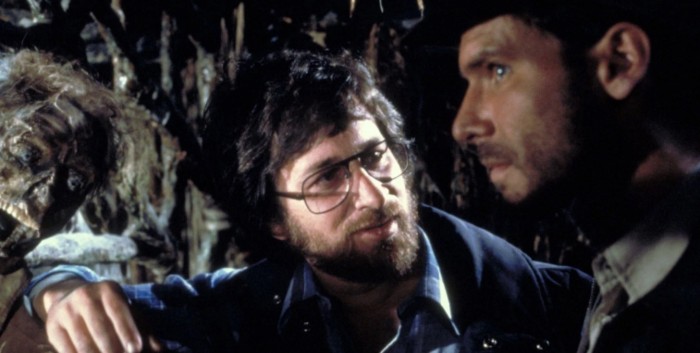 Simon Wincer: Look, I worked with Steven Spielberg on Young Indiana Jones. And then again [in 2005], I did an episode of Into the West. I shot the very first one of that TV series. It was interesting because, at the time, he was doing War of the Worlds. But I'd get notes about dailies and stuff like that. And when Spielberg saw the cut, there was literally only two notes. Both had to do with script and character. And he was so spot on. It was just something that didn't quite work, and we re-shot about three scenes and it just changed the whole thing. It was fantastic. People, I think, tend to think of Stephen and George Lucas as less script-oriented, but I found them quite the opposite. It's all about character and story to them. It's all about that with all the top guys. Doesn't matter what the camera's doing, doesn't matter what the score's doing. If it ain't on the page, it ain't on the stage. It's that simple.
Simon Wincer: Look, I worked with Steven Spielberg on Young Indiana Jones. And then again [in 2005], I did an episode of Into the West. I shot the very first one of that TV series. It was interesting because, at the time, he was doing War of the Worlds. But I'd get notes about dailies and stuff like that. And when Spielberg saw the cut, there was literally only two notes. Both had to do with script and character. And he was so spot on. It was just something that didn't quite work, and we re-shot about three scenes and it just changed the whole thing. It was fantastic. People, I think, tend to think of Stephen and George Lucas as less script-oriented, but I found them quite the opposite. It's all about character and story to them. It's all about that with all the top guys. Doesn't matter what the camera's doing, doesn't matter what the score's doing. If it ain't on the page, it ain't on the stage. It's that simple.
Part 4: The Phantom
Blake J. Harris: So now, to the big question: The Phantom. How'd you get involved?Simon Wincer: It's got an interesting history because I was making a movie for Disney called Operation Dumbo Drop and I was literally about to fly to London to do the score, and I got a call from John Goldwyn at Paramount and Sherry Lansing. "We want to make this film, The Phantom." Would you be interested? Well, I'd grown up with the comic. The Phantom was a very, very popular comic in Australia. Probably the most popular comic in the country when I was a kid. Just incredibly popular. And what had happened was they tried to make this film with Joe Dante directing and they were going to shoot it (part it) in Australia, Queensland. But for some reason or another—I think the financing fell through—it didn't happen. It was owned by Paramount and the script was by Jeffrey Boam—a terrific writer, Jeffrey wrote some of the Lethal Weapon films.Blake J. Harris: Yup. Lethal Weapons 2 & 3.Simon Wincer: Anyway, the reason they rang—why they offered me the film—was they need it in a hurry. Because they were doing a movie called The Saint, with Val Kilmer, and for some reason or another the film had to be delayed by six months. And so they needed a film for that slot. How about The Phantom? [laughing] So they offered it to me. So I literally went to Paramount on the way to Los Angeles Airport (on my way to London for Operation Dumbo Drop) to meet with Sherry and John and they said, "We'd love you to do the film. That's the good news. The bad news is we want it for next June."Blake J. Harris: Wow.Simon Wincer: And this would have been July or August. So anyway, I literally read the script on the plane going to London. Rang them and said, "Yes, okay, I'll commit to it." So that's sort of how it came about. Then when I got back and we started working out the logistics of it. [Laughing] I remember I was in a casting session. And I was actually reading a young actress called Jennifer Lopez. She was auditioning for the part that Catherine Zeta-Jones ended up playing.Blake J. Harris: Ha!Simon Wincer: There was an urgent call from the executive office And it was John Goldwyn saying, "I've just seen the budget" and he was yelling and screaming. You can't make the film for this much money! We don't have that much money and dah-dah-dah-dah-dah-dah-dah. Because Paramount had wanted to make the film in Mexico and Hawaii and Los Angeles. And they were all pretty expensive places to film. And I'd just done Operation Dumbo Drop in Thailand, so I paid to have a location manager go there and shoot some footage. But they didn't want to know about Thailand. They just thought it was too third world and ridiculous to make a movie there. But I'd just had a really good experience there. Anyway, this phone call to John—and I remember it very clearly; Jennifer Lopez was standing in the corner while I was talking on the phone—I said, "Give me 24 hours and I'll find a way to get it down to the number you want." I think it was about $40 million and this budget had come in at like $54 million. So that night I went through the script and I came up with a scenario: 2 weeks filming in Los Angeles, probably about 8 weeks in Thailand and then about 6 weeks on stages in Queensland. And by doing it that way, the budget was much closer to $40 million than $54 million. So at 8 o'clock the next morning, we were all in the head of production at Paramount and I put them through my proposed scenario. And with lots of reluctance, they agreed. And we took off to Thailand, did a quick scout and smiles all around.Blake J. Harris: Did the plan work?Simon Wincer: Yeah. So we shot for 2 weeks in Los Angeles, on the back lot at Universal. Shot the New York scenes there. It was just fantastic. Some great art-deco buildings in Los Angeles. Then we went over to Thailand, had a bit of a break over Christmas, and then finished up filming in Australia. Yeah, it was a terrific experience. A great movie to do, you know? Thailand's got such rich locations, it was perfect for that film. I remember Roger Ebert's review opened with something like "one of the finest-looking movies I've ever seen." We had a great art department. The cinematography of David Burr was just breathtaking. Paul Peters, the production designer, did a great job. And actually my wife Liz was the art director. They were a great team.Blake J. Harris: Oh wow, I didn't realize.Simon Wincer: So it was a very, very happy shoot. Though I remember, we got miles behind schedule because the monsoon kind of hung over in Thailand. And actually Sherry Lansing came to visit us. We were filming summer in the jungle and it started to piss with rain. So when we got back in the hotel, "wading through the foyer in ankle deep water , she said and she said, "I totally understand why you're behind schedule!"Blake J. Harris: That's amazing.Simon Wincer: [cracking up] So it was fun to do. I was disappointed the film didn't do better. I remember we had a preview at the Director's Guild one Sunday morning. It was families and all that. Got a fantastic reaction and Sherry was railing at all of her executives. "This film's opening in ten days and no one knows it's happening! What are we gonna do?" Well, that's the way it goes. You win some, you lose some, you know?Blake J. Harris: Yeah. But you had a great experience, that counts as winning.Simon Wincer: Oh yeah, yeah. And I'm proud of the film. And the thing about the Phantom; yes, he's a superhero. But he doesn't have any gadgets. He has a Wolf Dog and a revolver and a Phantom Ring that [laughing] doesn't do much. And I guess we were sort of competing against much more sophisticated superheroes like Batman and Superman and all that kind of stuff. Who knows? But the film's got heart, you know?Blake J. Harris: How did you end up casting Billy Zane?Simon Wincer: Well he was actually pretty much attached to it from the start. Originally, when they were gonna make it some years earlier in Australia he had already been cast and Paramount liked him. So he was pretty much attached when they decided to revisit.Blake J. Harris: What was he like to work with on the film?Simon Wincer: Oh, Billy? He was okay, he was okay. He was very into his body image and all that stuff—which I guess was right for the character—and it used to drive us all crazy, but his heart was in the right place. [laughing] Occasionally he would pump up before a take and it use to drive Patrick McGoohan crazy.Blake J. Harris: [laughing]Simon Wincer: But yeah, I suppose, one of the nice things about our job is that you get to go to fantastic parts of the world and work with some really interesting and terrific people. You work hard, but you all have a common goal, which is great.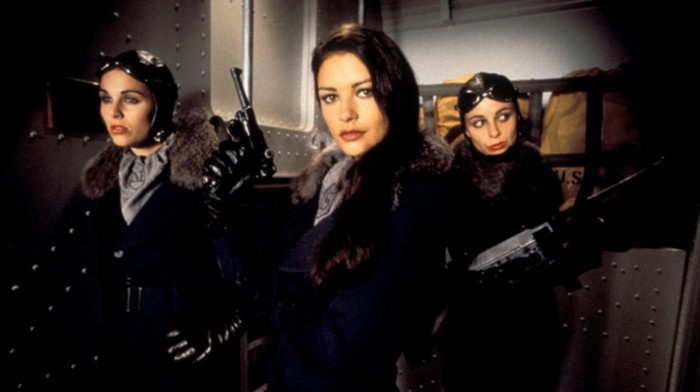 Blake J. Harris: And what about Catherine Zeta-Jones? You'd mentioned Jennifer Lopez auditioning for that part. How did you end up with Catherine?Simon Wincer: Well actually, I found Catherine Zeta-Jones from an episode I did of Young Indiana Jones. Where she played a double-agent. I had her and another unknown actor in this episode and the other unknown actor was Daniel Craig.Blake J. Harris: Ha!Simon Wincer: And they were the two leads. He played a German baddie and it was an episode written by Frank Darabont. Anyway, we did this episode for Young Indiana Jones. Originally, the role was supposed to be played by Minnie Driver. But right before we were going to shoot in Istanbul, she had been offered a part with the BBC and asked if it would be okay to go off and do that. So we needed to find someone else in a hurry. Casting sent me this tape and it was Catherine Zeta -ones. And it was a movie. I can't even remember the name of it, all I can remember—and I'm sure it's long since been erased by everyone's memory—she was literally totally naked the entire film.The film Wincer must be referring to is Les 1001 NuitsSimon Wincer: I'm sure Michael Douglas must have bought up every copy! But anyway, I said, "Yeah, she looks fine." But I didn't have time to meet her ahead of time. So when she turned up in Istanbul, it was quite late one night and we were sitting in the hotel bar. Catherine walked over and I said, "It's nice to meet you with clothes on." She laughed and she was a great sport. Because I'd only seen her naked in this film! Anyway, she turned out to be a real sport. Just wonderful. And when we were casting The Phantom, I wanted to screen test Catherine. We did them in the studio on Paramount lot. And when Sherry Lansing saw them, she just went over the moon. "God, she's great, she's great. She's gonna be a star!" And it wasn't long after that The Phantom she caught Spielberg's eye and was cast in Zorro.Blake J. Harris: One more question about The Phantom. I know you said you're proud of the film, but I was wondering if how that situation played out made you wary of entering other situations were a film was needed in a hurry to fill a slot.Simon Wincer: Having grown up in television, I guess, you've got so much more mileage under your belt. Now look, I don't think the way it turned out is any reflection on the amount of time we had to make it. The schedule turned out to be fine. And the post-production was pretty tight, but not unusual. So from that point of view: no, I wouldn't say it was a compromise, you know? It was what it was. We made what was on paper pretty much.
Blake J. Harris: And what about Catherine Zeta-Jones? You'd mentioned Jennifer Lopez auditioning for that part. How did you end up with Catherine?Simon Wincer: Well actually, I found Catherine Zeta-Jones from an episode I did of Young Indiana Jones. Where she played a double-agent. I had her and another unknown actor in this episode and the other unknown actor was Daniel Craig.Blake J. Harris: Ha!Simon Wincer: And they were the two leads. He played a German baddie and it was an episode written by Frank Darabont. Anyway, we did this episode for Young Indiana Jones. Originally, the role was supposed to be played by Minnie Driver. But right before we were going to shoot in Istanbul, she had been offered a part with the BBC and asked if it would be okay to go off and do that. So we needed to find someone else in a hurry. Casting sent me this tape and it was Catherine Zeta -ones. And it was a movie. I can't even remember the name of it, all I can remember—and I'm sure it's long since been erased by everyone's memory—she was literally totally naked the entire film.The film Wincer must be referring to is Les 1001 NuitsSimon Wincer: I'm sure Michael Douglas must have bought up every copy! But anyway, I said, "Yeah, she looks fine." But I didn't have time to meet her ahead of time. So when she turned up in Istanbul, it was quite late one night and we were sitting in the hotel bar. Catherine walked over and I said, "It's nice to meet you with clothes on." She laughed and she was a great sport. Because I'd only seen her naked in this film! Anyway, she turned out to be a real sport. Just wonderful. And when we were casting The Phantom, I wanted to screen test Catherine. We did them in the studio on Paramount lot. And when Sherry Lansing saw them, she just went over the moon. "God, she's great, she's great. She's gonna be a star!" And it wasn't long after that The Phantom she caught Spielberg's eye and was cast in Zorro.Blake J. Harris: One more question about The Phantom. I know you said you're proud of the film, but I was wondering if how that situation played out made you wary of entering other situations were a film was needed in a hurry to fill a slot.Simon Wincer: Having grown up in television, I guess, you've got so much more mileage under your belt. Now look, I don't think the way it turned out is any reflection on the amount of time we had to make it. The schedule turned out to be fine. And the post-production was pretty tight, but not unusual. So from that point of view: no, I wouldn't say it was a compromise, you know? It was what it was. We made what was on paper pretty much.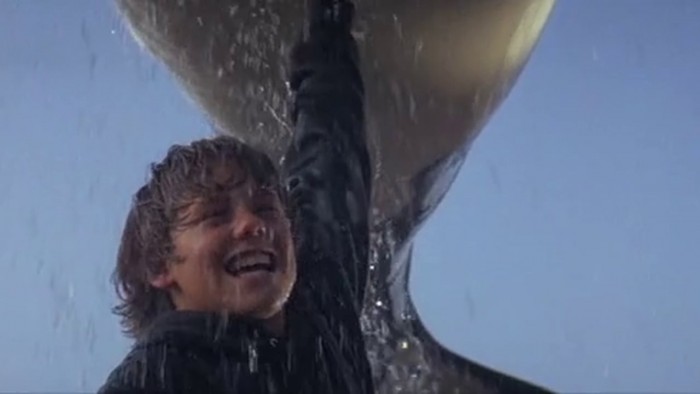
Part 5: Authenticity, Serendipity and Heart
Blake J. Harris: One thing I'm curious about...You're not American-born, but you've directed a lot of great stories about the American West. Even though the genre has waned in recent years, it's still something we seem to be fascinated with. Why do you think that is and, also, what has been your approach to telling those stories?Simon Wincer: I mean, I love stories of the American West. And I guess, the thing about Lonesome Dove for me was—when that was released—the western had become so bastardized. With these half hour TV westerns and stuff like that, you know? Wearing silly hats and jeans and stuff like that. So myself, Bill Wittliff, Cary White (the production designer) and Van Ramsey (the costume designer), we went back to the history books and the old photographs. And Larry McMurtry had written such a wonderful book. It was just so original and the characters—my god—they were so real and so wonderful. So we wanted to stay true to that material. Like I remember people would be rushing in to clear manure off the street and I would be saying, "No! Leave it there! Leave it there! It's real."Blake J. Harris: HahaSimon Wincer: And the flies and the dust and the wind and all that, it's all sort of life in the west in those days...and I suppose the other thing about the form. There are great stories of good triumphing over evil and that sort of stuff, so I'm always drawn to stories with a strong emotional through-line. Those are stories that appeal to me, stories that make people cry.Blake J. Harris: Yeah, I'm glad you brought that up because it's a good segue to the last thing I wanted to ask. One common thread throughout your work is that your films "have heart." And, I mean, every director would like to believe that his stories have heart. But it's not that easy. It's hard to capture. So how have you continually manage to capture "heart?"Simon Wincer: [laughing] That's a wonderful question. Very interesting. [thinks for a couple moments] You know, the script has to get me in the heart, I suppose. I can't quite articulate how I capture it. I guess it is a combination of three things. Firstly, the screenplay. Secondly the cast. And thirdly...what I look for when I'm editing a film is those moments when all the elements of performance, sound effects, music and cinematography combine to send a shiver up your spine. You really try to get those key moments, you know?Blake J. Harris: That makes sense.Simon Wincer: It's those moments. Like the whale leaping over the wall. Finding those moments and it's the sum total of everything that's come before. It's about mountains and valleys. Putting a character in a deep valley and then watching them climb out of it and that, to me, is what you have to deliver.

